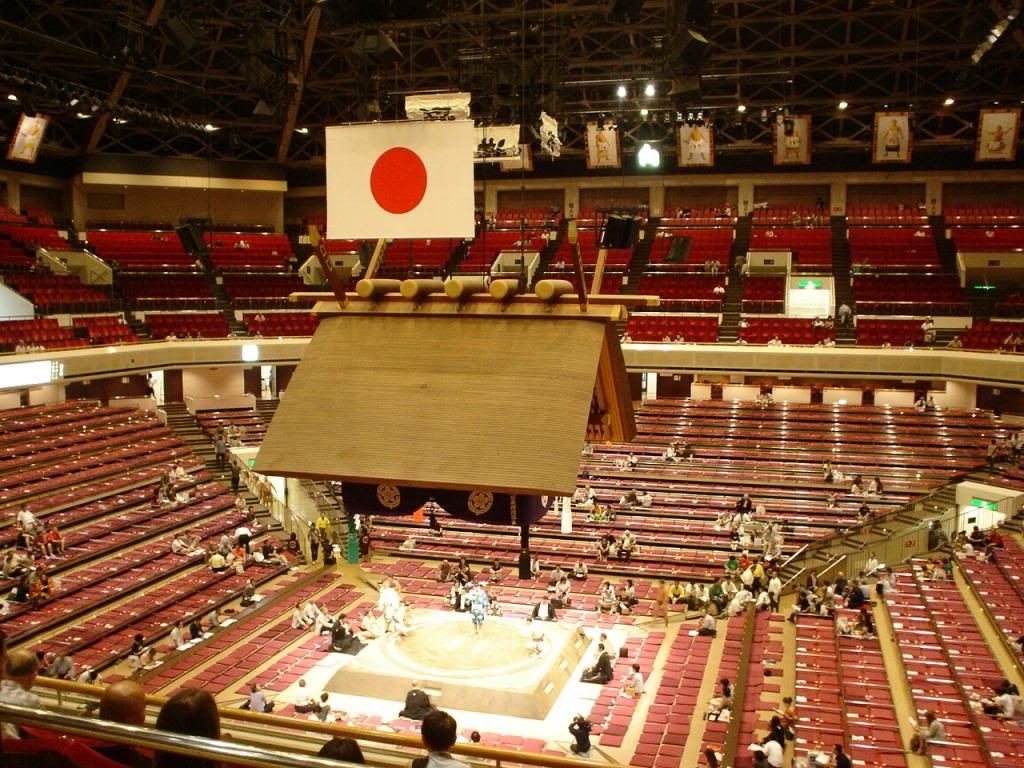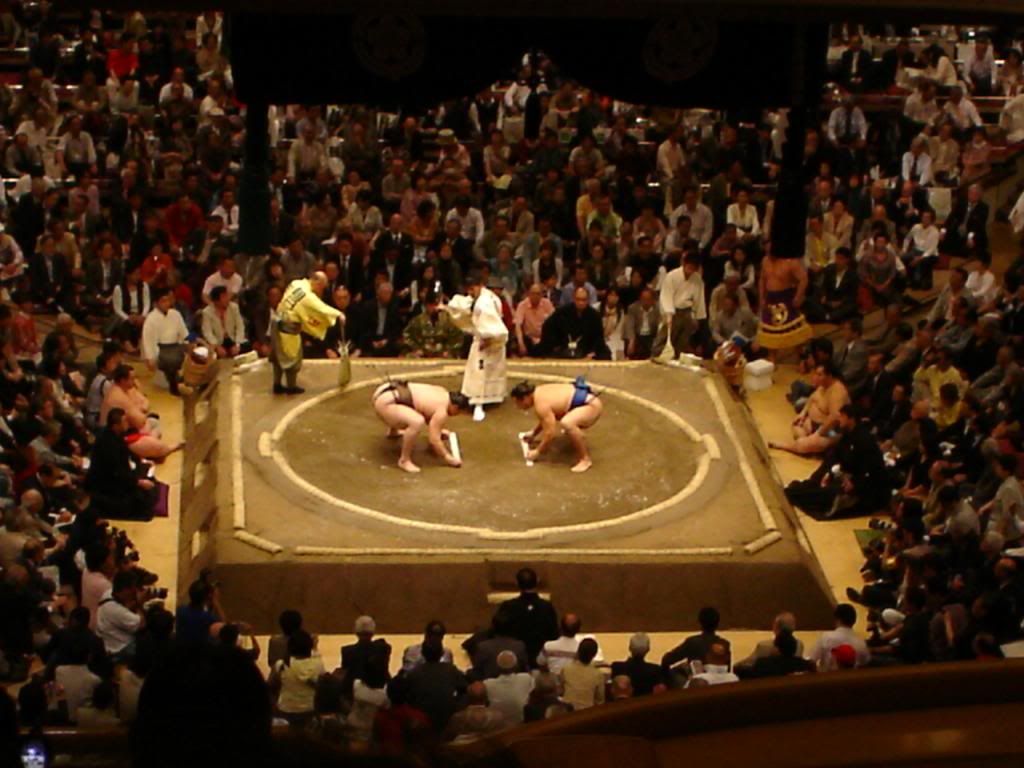It’s now September, which means another sumo tournament in Tokyo.
[vc_row][vc_column width=”1/4″][vc_separator color=”black” border_width=”10″][vc_custom_heading text=”Tokyo”][vc_separator color=”black” border_width=”2″][vc_widget_sidebar sidebar_id=”sidebar-page”][/vc_column][vc_column width=”3/4″][vc_column_text]
It’s now September, which means another sumo tournament in Tokyo. Sumo is Japan’s national sport, and it’s very popular with foreign tourists. There are six tournaments every year, three in Tokyo, and one in each of Osaka, Nagoya, and Fukuoka. The tournaments take place in Tokyo in January, May, and September, while Osaka’s is in March, Nagoya’s is in July, and Fukuoka’s is in November. I’ve attended all three tournaments in Tokyo.
Tokyo’s tournaments take place at the Ryogoku Kokugikan, or Ryogoku Sumo Hall. It’s located next to Ryogoku Station in Sumida Ward, Tokyo. It’s across the Sumida River from the famous and touristy shopping district of Asakusa. Seating 13,000 people, it’s host to many events, including boxing and professional wrestling. You can order tickets online or at Lawson convenience stores, or you can buy them on the day of the tournament at Kokugikan. That’s what I did. What’s interesting about the Kokugikan is that many of the people working there are retired sumo wrestlers. Even the men that take tickets are retired sumo wrestlers, or Oyakata, now coaches.
The inside of the Kokugikan is impressive. There’s a tsuriyane, a Shinto-style roof, suspended above the dohyo, or ring. Around the dohyo, there’s seating on mats for the wealthy and privileged. Further away are mat seating boxes for the general public. Up higher on the second level are the stadium style seating. This is where I sat.
There are six ranked divisions in sumo, with the top two being fully professional rikishi. Any below the top divisions are paid a living allowance only. Most people come for the top division, Makuuchi, as well as the second division, Juryo. Most of the time, for the first four divisions, the Kokugikan is pretty empty. The matches start early in the morning, while Juryo starts at around 1 to 2 pm, and Makuuchi starts at 3 pm. That’s when live broadcasting begins on TV. At the beginning of the matches for each division, an entrance ceremony is held. The Makuuchi ceremony is the most decorated, and the Yokozuna have their own entrance ceremony, being the highest ranked rikishi.
The matches themselves are ritualistic. Each rikishi must perform a series of movements before the match can begin, and it involves a ceremonial toss of salt into the ring to purify it. The referee oversees this ceremony, and marks the moment when they should begin the match. They face off, crouching low, touch their fists to the floor, and charge. A typical match will be over in 10 seconds or less. Some go longer, and can be quite exciting. It’s remarkable how athletic they really are. Many of them are fast with amazing reflexes. As the matches go on, the skill levels increase, and the final matches involving the top two ranks, Ozeki and Yokozuna, are usually the best.
If you’re lucky, you may be able to see the Emperor of Japan, or even more likely, his granddaughter, Princess Aiko. She’s a big fan of sumo. But even without the Imperial family present, sumo is a must for anyone visiting Tokyo. It’s a great way to see an old tradition that’s still going on, scandals or not.
Subscribe to the latest edition now by clicking here.
If you would like to comment on this story or anything else you have seen on World Travel Magazine, head over to our Facebook page or message us on Twitter.
And if you liked this story, subscribe to our bi-monthly World Travel Magazine, a handpicked selection of editorial features and stories from Global Destinations, Inspire Me, Insider, Style File, Wellness & Travel, City Travel, Suite Life, At Leisure, Short Breaks and much more.
[/vc_column_text][/vc_column][/vc_row]






